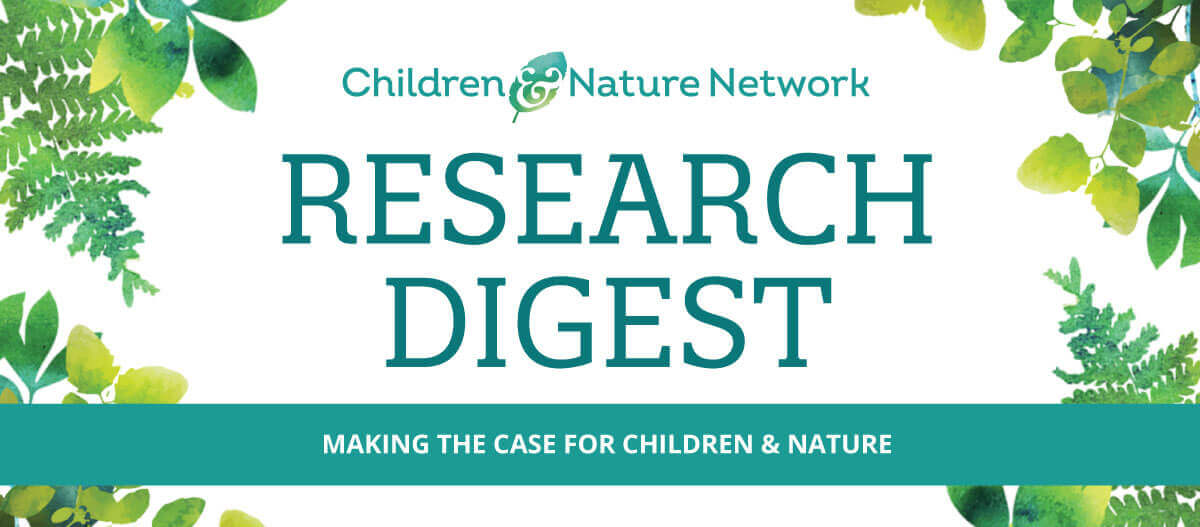NEGATIVE IMPACTS OF COVID RESTRICTIONS
Social distancing measures instituted by governments around the world include the closure or restricted use of many outdoor venues. Negative impacts of such measures for many children include decreased physical activity and play opportunities. Such negative impacts tend to be especially harmful for children living in disadvantaged neighborhoods.
COVID-related restrictions have negatively impacted the mental health of children and youth
Factors negatively impacting the mental health of children and youth during COVID include a reduction in social support and increased exposure to unhealthy home situations, especially evident in the most deprived families. Identified sources of support for children and families included being outdoors in nature.
Cowie & Myers, 2020. The impact of the COVID-19 pandemic on the mental health and well-being of children and young people.
Access Study
The negative impact of COVID-related stressors on children and adolescents calls for a robust public health response
For many children, COVID restriction meant an abrupt withdrawal from outdoor activities and a switch from the “play-outside mode” to the “play-indoor mode” and more screen time. Biological, environmental, and social factors associated with COVID and related restrictions are widening and exposing health inequalities experienced by many children and adolescents.
de Figueiredo et al. 2021. COVID-19 pandemic impact on children and adolescents’ mental health: Biological, environmental, and social factors.
Greater COVID restrictions are associated with greater declines in children’s outdoor play
Canadian responses to COVID include policies both facilitating and restricting access to outdoor spaces. Unsurprisingly, provinces that had the highest number of COVID cases enacted the most stringent restrictions on access to the outdoors; provinces with the most stringent restrictions had the greatest decline in time spent outdoors and in outdoor play among children and youth.
Lannoy et al. 2020. Regional differences in access to the outdoors and outdoor play of Canadian children and youth during the COVID-19 outbreak.
Access Study
Certain environmental features are associated with children’s physical activity during COVID
Physical activity levels increased for some Canadian children during the pandemic; for others, it decreased. For some children, school grounds and playground closures may have contributed to decreased physical activity.
Mitra et al. 2020. Healthy movement behaviors in children and youth during the COVID-19 pandemic: Exploring the role of the neighborhood environment.
Access Study
Unhealthy consequences of COVID-19 include a decrease in children’s movement and play behaviors
With the onset of pandemic restrictions, leisure screen-based activities increased and physical activities decreased for Canadian children. The most dramatic decline was with outdoor physical activity and sport.
Moore et al. 2020. Impact of the COVID-19 virus outbreak on movement and play behaviors of Canadian children and youth: A national survey.
Access Study
Children’s physical activity levels during confinement are linked to their living conditions
While not the only variable influencing Portuguese children’s physical activity during COVID, having a big outdoor space was the largest factor, especially for children age three to nine.
Pombo et al. 2020. Correlates of children’s physical activity during the COVID-19 confinement in Portugal.
Access Study
Disparities in access to greenspace become a greater concern when social distancing is required
An investigation into access to public greenspace in England and Wales during COVID-19 found that, while some high-density neighborhoods had more parks, access was limited due to overcrowding concerns.
Shoari et al. 2020. Accessibility and allocation of public parks and gardens in England and Wales: A COVID-19 social distancing perspective.
Access Study
Socioeconomic factors influenced the frequency of green space visits before and during COVID
Researchers in Japan collected information about visits to green areas before and during the pandemic. Household income played the largest role in frequency, but land use patterns also made a difference. Parks were visited by relatively younger respondents who lived in urban areas, while agricultural lands and gardens were visited by the older respondents who lived in rural areas or areas in between.
Uchiyama & Kohsaka, 2020. Access and use of green areas during the COVID-19 pandemic: Green infrastructure management in the “new normal”.
Access Study





